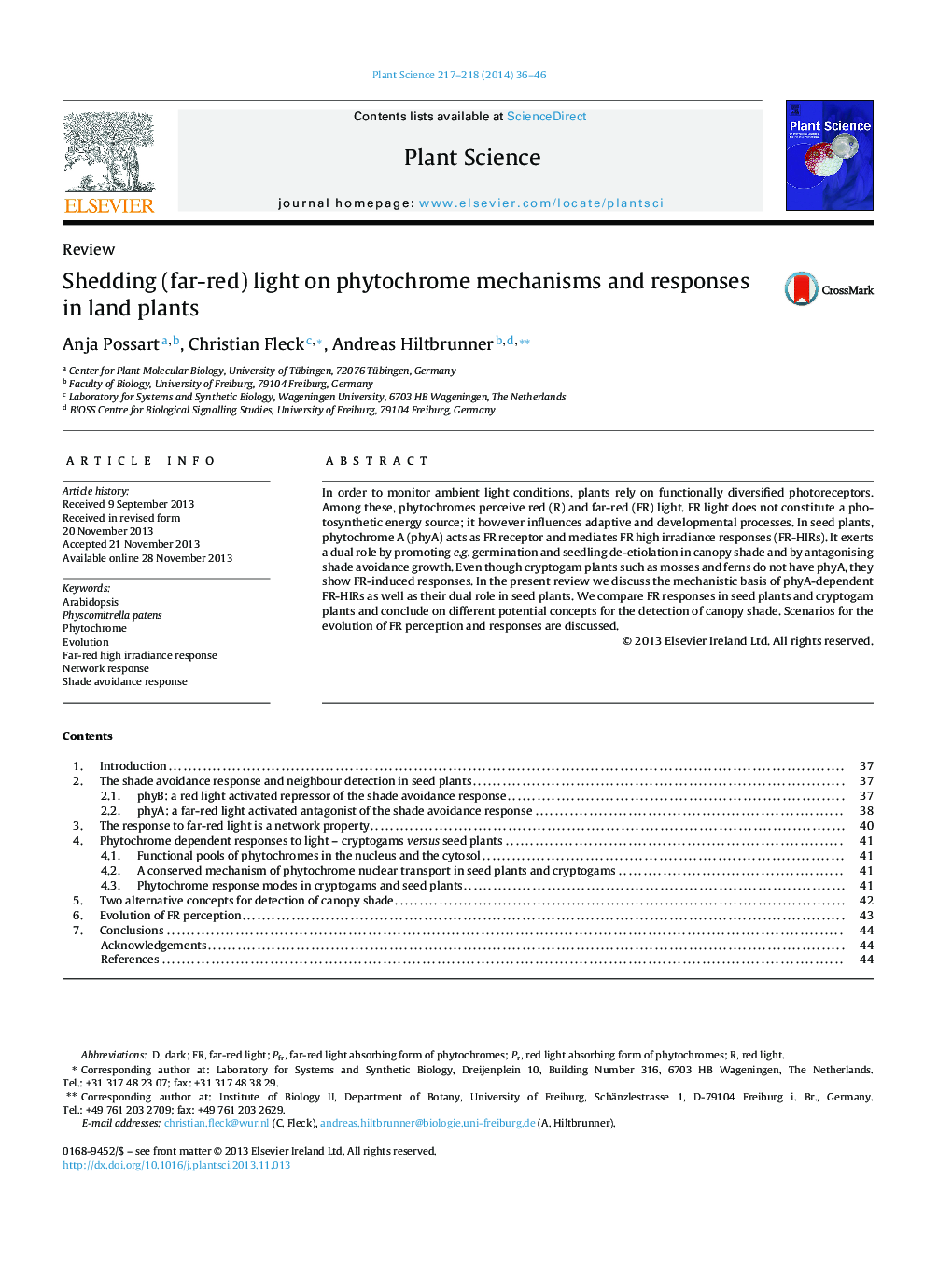| Article ID | Journal | Published Year | Pages | File Type |
|---|---|---|---|---|
| 8358364 | Plant Science | 2014 | 11 Pages |
Abstract
In order to monitor ambient light conditions, plants rely on functionally diversified photoreceptors. Among these, phytochromes perceive red (R) and far-red (FR) light. FR light does not constitute a photosynthetic energy source; it however influences adaptive and developmental processes. In seed plants, phytochrome A (phyA) acts as FR receptor and mediates FR high irradiance responses (FR-HIRs). It exerts a dual role by promoting e.g. germination and seedling de-etiolation in canopy shade and by antagonising shade avoidance growth. Even though cryptogam plants such as mosses and ferns do not have phyA, they show FR-induced responses. In the present review we discuss the mechanistic basis of phyA-dependent FR-HIRs as well as their dual role in seed plants. We compare FR responses in seed plants and cryptogam plants and conclude on different potential concepts for the detection of canopy shade. Scenarios for the evolution of FR perception and responses are discussed.
Keywords
Related Topics
Life Sciences
Agricultural and Biological Sciences
Plant Science
Authors
Anja Possart, Christian Fleck, Andreas Hiltbrunner,
